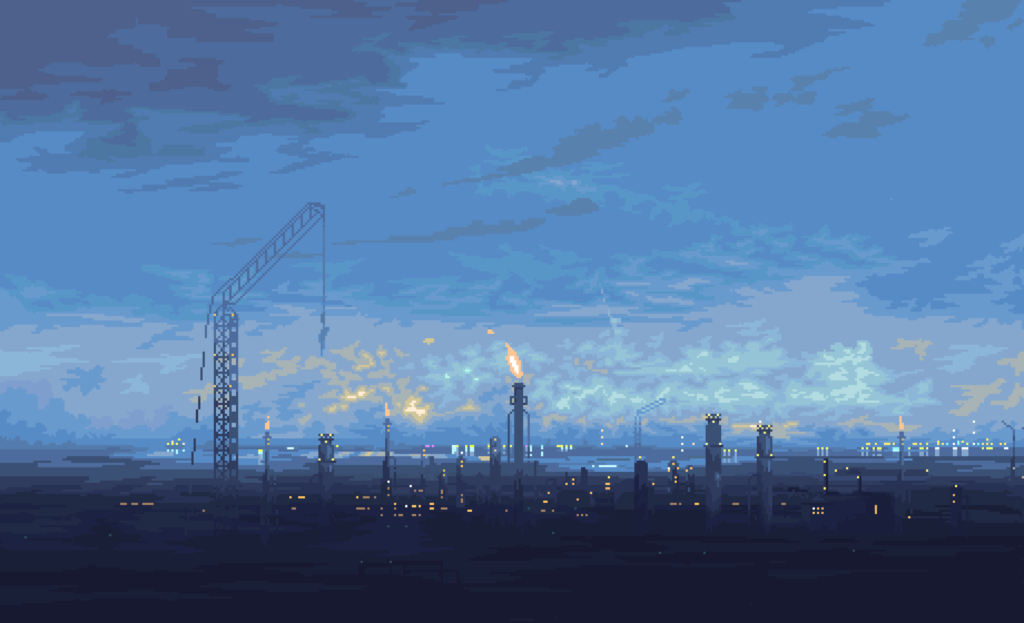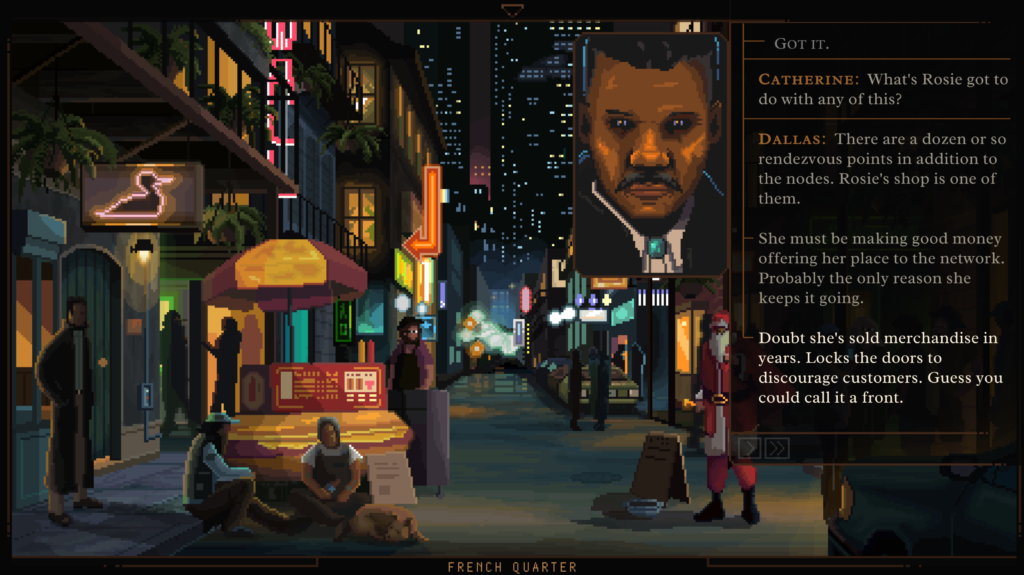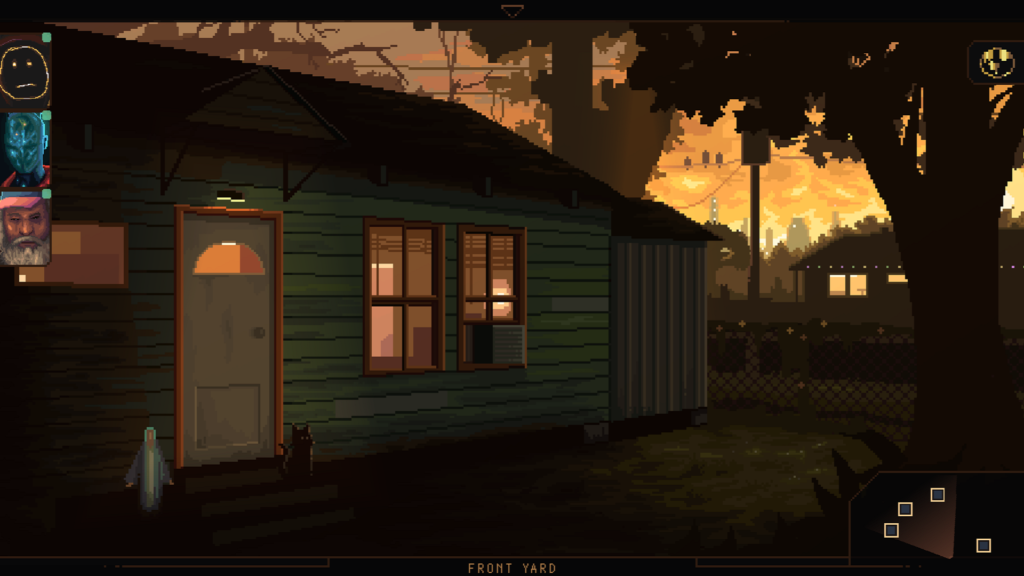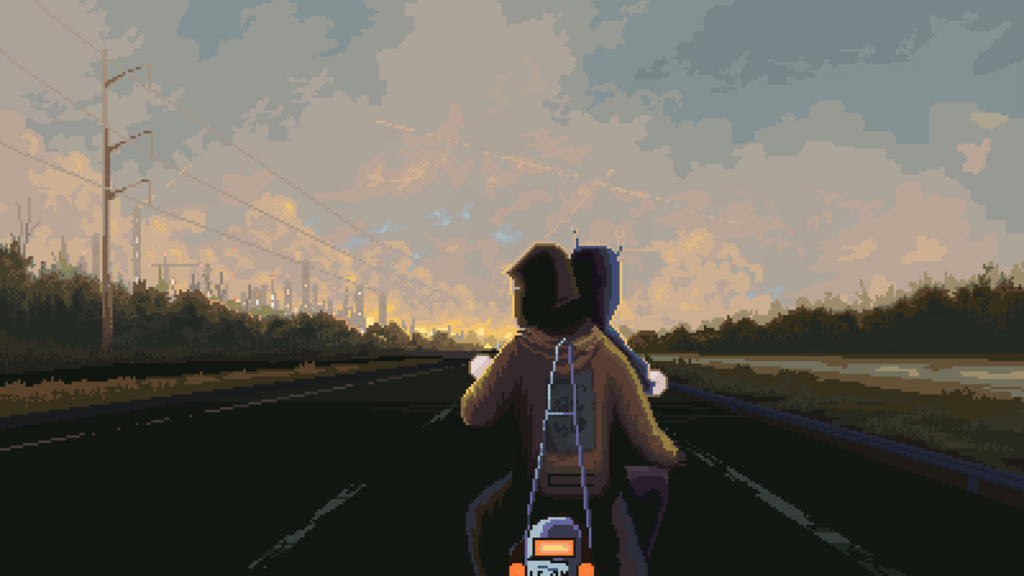




NORCO follows a young woman named Kay who returns to her hometown of Norco, Louisiana to settle the affairs of her recently deceased mother. Upon her arrival, she discovers that her brother has gone missing, and her search to find him leads her through an increasingly distorted and magnified South Louisiana. The game has its roots in a small geography and oral history project conducted in the aftermath of Hurricane Katrina that explored industrialization, erosion, and other characteristics of America’s Deep South. The game carries these research interests forward into the COVID era, where truth is contested, and reality, conspiracy, and dreams entwine.
As NORCO leads the player down the rabbit hole, the game offers many lenses through which to understand the dissolution of a community, whether it be through climate instability, wetland erosion, and repeated flooding; the social atomization of the internet; spiritual crisis and a loss of faith; or illness and residential displacement by industry. NORCO is a game about the loss of home, and the fraught and often misguided attempts we make to rediscover it.
While the scope of NORCO has grown since its inception, it was originally created using open source tools such as Phaser.js, as well as low resolution “pixel art” with maximum canvas sizes of 600×400 pixels. This early emphasis on small file sizes and simple, often textual game mechanics reflects an ethos of creating media that demands little from its host machine. Geography of Robots, the studio behind the game, is interested in exploring these ideas further, and creating small, portable experiences that are platform agnostic.
About the Author
Geography of Robots is a collaborative of artists and developers exploring the geography of the American South through interactive media.

